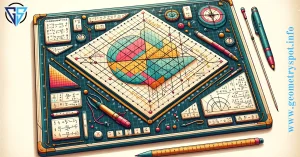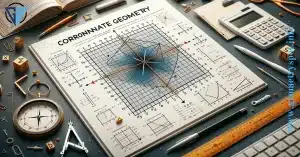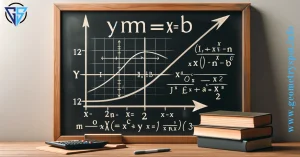Why Compasses in Geometry Are Still a Must-Have: 11 Reasons You Can’t Ignore

Let’s be real; geometry can be a bit daunting. All those lines, angles, and figures can get downright confusing! Don’t fret. There’s a superhero in the mathematical world ready to come to your rescue, and it goes by the name of “Compass.” Forget the bells and whistles of high-tech tools; this simple device has been solving complex problems for centuries. So, what’s the fuss all about? Why are compasses needed in geometry? Well, sit tight, because we’re about to go on a fascinating journey to unlock the mysteries of this incredible tool.
The Timeless Origin of Compasses in Geometry

Ever wondered where these nifty tools came from? Hold on to your hats because compasses have been around for a long time!
How Ancient Civilizations Used Compasses
Way before Pythagoras was a twinkle in his mother’s eye, civilizations like the ancient Egyptians were already mapping out the stars and building the pyramids. And guess what? They leaned heavily on geometry. So, how did they measure precise angles or craft those flawless shapes? You bet, they used primitive versions of a compass. Made from materials like wood and string, these compasses might have been basic, but oh boy, did they pack a punch!
The Transformation of Compasses Through Time
As they say, time changes everything, and the compass is no exception. Over the centuries, this indispensable tool has evolved quite a bit. Forget wooden arms and strings; today’s versions are built from resilient metals and come with nifty features like quick-adjust wheels and locking mechanisms. No kidding, the compass has moved with the times but has stayed true to its geometry-solving roots.
The Nuts and Bolts of a Geometry Compass
So, you’ve got a compass. Awesome! But looking at its two arms and a hinge, you’re probably wondering, “What’s next?”.
Components of a Compass
Understanding the anatomy of a compass isn’t like learning rocket science. Essentially, it consists of two arms: one with a pointy end that you anchor to the paper and another with a pencil or pen for drawing. A simple hinge connects the two arms, allowing you to manipulate their distance for various shapes and sizes. Piece of cake, right?
How to Use a Compass Effectively
First things first, grab hold of the compass where the two arms meet. Adjust the hinge to open or close the arms depending on the radius of the circle you want to draw. Now, press the pointy end into the paper this is your center and rotate the arm holding the pen or pencil. Voila, you’ve drawn a perfect circle! But that’s not all; with a little practice, you can use the compass to bisect angles, draw perpendicular lines, and much more. The sky’s the limit!
Why Are Compasses Needed In Geometry?

Ah, the trusty compass a tool as timeless as geometry itself. But with today’s whizz-bang tech, you might be asking, “Why the heck do we still need compasses in geometry?” If you’re scratching your head about this, you’re in the right place. Dive in as we dissect the invaluable role that compasses play in making geometry a walk in the park!
Drawing Accurate Circles
Remember the doodles you used to draw as a kid? Yeah, those circles were a hot mess! But when it comes to geometry, precision is the name of the game. Sure, you can try sketching a circle freehand, but let’s be honest you’ll end up drawing what looks like a potato. Enter the compass, your go-to gadget for circles so perfect they’d make Euclid proud. From radius to circumference, every detail is spot-on, making the compass a must-have for any budding geometer.
Making Geometric Constructions
Geometry isn’t just about shapes; it’s a whole universe built on axioms, theorems, and whatnot. Think of geometric constructions as the building blocks of this universe. Need to bisect an angle or construct a perpendicular bisector? A compass has got your back. So, it’s time to adventure with Geometry Games. From simple lines to complex shapes like hexagons and ellipses, a compass serves as your handy-dandy Swiss Army knife for all things geometry.
Ensuring Mathematical Precision
Let’s face it: in geometry, even a millimeter off can throw a whole problem out of whack. That’s why mathematical precision is crucial. With a compass, you can rest easy knowing your measurements are on point. Unlike freehand drawing or digital approximations, a compass offers a degree of accuracy that is second to none. So, the next time you’re sweating over a geometry problem, just reach for your trusty compass.
Educational Benefits of Using a Compass
Alright, enough about lines and circles. Let’s get into the nitty-gritty of how a compass can actually make you smarter no kidding!
Teaching Spatial Awareness
Geometry is all about understanding how shapes and sizes relate to each other in space. A compass not only helps you draw these shapes but also offers an intuitive grasp of spatial relationships. You’ll start seeing the world as a complex interplay of lines, angles, and curves, enriching your spatial intelligence.
Developing Fine Motor Skills
Remember the old saying, “Practice makes perfect?” Well, using a compass is a fantastic exercise in hand-eye coordination. The more you use it, the better you get at controlling those tiny movements that make all the difference in your drawings. It’s like hitting the gym but for your fingers and brain!
Improving Logical Reasoning
Geometry is much more than a visual subject; it’s a mental workout that hones your logical reasoning. Using a compass to solve geometric problems encourages you to think critically, fostering skills that are applicable well beyond the math classroom.
Compass vs. Software: A Comparative Analysis
With all the high-tech tools at our disposal, you might wonder if traditional compasses are becoming obsolete. Let’s break it down.
Why the Old-School Way Works Better
Nothing beats the tactile experience of using a compass. The feel of the metal, the sound of the pencil on paper it’s a sensory feast that digital tools simply can’t replicate. Plus, it trains you to appreciate the nuances of each geometric concept in a way that software often glosses over.
Where Digital Tools Have an Edge
Let’s give credit where credit’s due. Digital geometry software offers incredible convenience, especially for complex constructions that would take ages by hand. Plus, they offer real-time analytics and instant error correction. But remember, they’re a supplement, not a substitute for a good old-fashioned compass.
Compass Techniques That Experts Swear By

So, you’ve got the basics down pat, but want to take your compass game to the next level? Listen up, because we’re about to spill the tea on some expert-level compass techniques. From creating intricate geometric patterns to executing flawless bisectors, there are tricks of the trade that can elevate your geometry skills from decent to downright dazzling.
Compass in Trigonometry
Whoa, hang on aren’t compasses for geometry? True, but let’s not put this tool in a box. Trigonometry, with all its sines, cosines, and tangents, can also benefit from the precision a compass offers. Constructing triangles and identifying angles are a breeze when you’ve got your trusty compass by your side.
Compass in Coordinate Geometry
If you think Cartesian coordinates and compasses are strange bedfellows, think again. Compasses can be invaluable for plotting points and constructing lines and curves in coordinate geometry. So yes, Rene Descartes would definitely approve!
How to Choose the Right Compass
Don’t just grab the first compass you lay eyes on. Like any other tool, you need the right one for the job. So how do you go about choosing?
Features to Look For
The devil is in the details. Check for an ergonomic design, replaceable leads, and easy-to-tighten screws. A metal compass is often more durable than a plastic one, but it’s all about personal preference.
Price vs. Quality
We get it sometimes the budget is tight. But skimping on a compass is a false economy. A quality compass can last you a lifetime, while a cheap one might not even last through a semester. So weigh your options and make a wise investment.
Compasses in Professional Fields
Who says compasses are just for students and hobbyists? Pros in various fields use these tools.
Engineering
Engineers often rely on compasses for precise measurements and drafting. When designing bridges, skyscrapers, or even everyday gadgets, a compass is an essential tool for exact calculations.
Architecture
From floor plans to 3D models, architects use compasses to bring their creative visions to life. A compass helps ensure that every angle and curve is just right, turning blueprints into masterpieces.
Creative Uses of Compasses Beyond Geometry
Life’s too short to be boring, right? So why limit the compass to academic pursuits?
Art and Design
Talk to any artist, and they’ll tell you how a compass can be a game-changer. Whether it’s creating mandalas or sketching out a landscape, a compass can bring an unparalleled level of precision to art.
Navigation
Last but not least, let’s not forget the compass’s original purpose navigation. While the tools may differ, the principles remain the same, making compasses invaluable for anyone from sailors to hikers.
FAQs
Is a compass really essential for learning geometry?
Absolutely. A compass helps you understand geometric concepts in a hands-on manner, making it a must-have tool for anyone studying geometry.
What are some common mistakes people make when using a compass?
Common errors include not tightening the screw properly, leading to inaccuracies, and using a pencil that’s not adequately sharpened.
How do compasses work with protractors?
Protractors and compasses often work hand-in-hand, with the protractor measuring angles and the compass helping to construct them accurately.
Can compasses be used in advanced mathematics?
Definitely. Beyond basic geometry, compasses are utilized in various fields like trigonometry, engineering, and even some areas of calculus.
What are the alternatives to a traditional compass?
While digital tools and software can mimic the functions of a compass, many professionals and educators still prefer the precision and tactile experience of using a traditional compass.
Are there specialized compasses for different applications?
Yes, there are varieties of compasses designed for specific tasks, such as beam compasses for large circles and navigational compasses for, well, navigation.
Conclusion
Alright, let’s wrap this up. If you’ve been following along, you should be a bona fide compass aficionado by now. From their humble beginnings to their multifaceted applications today, compasses are much more than a classroom staple they’re a timeless tool that spans multiple disciplines and even crosses over into art and design.
So, the next time someone asks, “Why are compasses needed in geometry?” you’ll have a treasure trove of reasons at your fingertips. Whether you’re a student, a teacher, an engineer, or an architect, a quality compass can make your work more accurate, efficient, and enjoyable.
In this age of digital everything, a compass reminds us that sometimes the simplest tools are the most effective. So go ahead, embrace the compass, and let it guide you not just on paper but perhaps also in the many circles of life.






